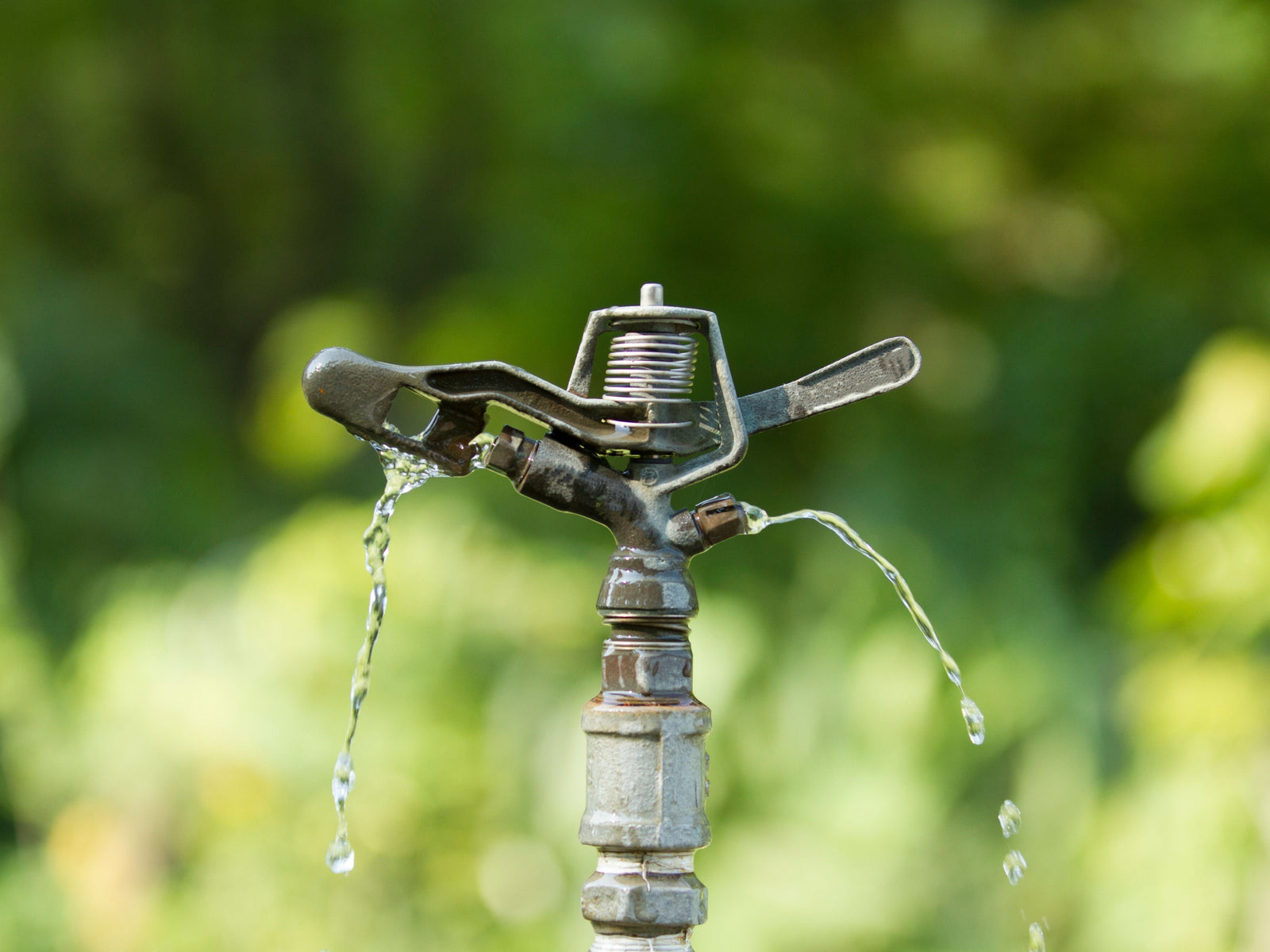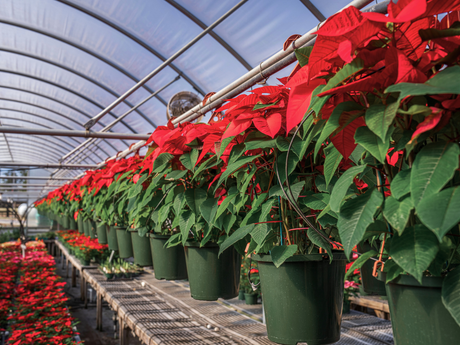Florida’s landscapes are as beautiful as they are unique, with lush palms, sandy soil underfoot, and that ever-present, hair-frizzing humidity. It may feel like tropical paradise, but all that beauty comes with responsibility. Add in sporadic rain fall and diverse plant types such as ferns in shady spots, hibiscus in sunny corners, and large expanses of turfgrass, and it’s clear that homeowners must take a thoughtful approach to their irrigation systems.
While a one-size-fits-all watering system might sound ideal, it’s not the most efficient or wallet-friendly way to keep your yard looking fresh. The real secret to a heathy Florida yard? Using the right watering method in the right place — and sometimes that means sprinkling a little here and dripping a little there.
Sprinkler Irrigation: Perfect for Lawns and Large Areas

You’ve seen them, maybe even danced through one as a kid. Sprinkler systems with rotary heads and spray nozzles are the classic lawn-care heroes. Water is distributed across wide areas, keeping turfgrass like St. Augustine and Zoysia as lush as a golf course.
Some of us may even notice the sprinkler timers going off around our neighborhoods. Thanks to modern tech, many homeowners don’t even have to lift a finger. Timers and smart controllers do the work while you're snoozing or sipping coffee. And yes — they’re still great for spontaneous backyard fun when the Florida sun starts blazing.
But it goes a little deeper than that. Installing a sprinkler system takes planning. Like, serious underground planning. Utilities must be marked, soil types tested, and you’ll need to choose the right gear. Once you have sorted the right pumps, valves, sprinkler heads, and pipe layouts for your landscape, irrigation services get to work. Digging begins and your yard temporarily turns into a construction zone (don’t worry, it’s worth it).
The system is an assembly of above- and below-ground pipes, valves, jets, pumps, and sprinkler heads. In residential areas, pipes are typically buried 8 to 12 inches underground, while commercial properties often require deeper lines, usually 18 to 24 inches.
Professionals and homeowners also work together to choose the right type of sprinkler head. Common types include:
- Oscillating Sprinklers: Spray water back and forth with a triangular stream of water, best for medium sized square lawns
- Rotary Sprinklers: Feature one or more rotating arms that spin to cover a circular area. Best for large rectangular lawns over 30sq feet
- Stationary Sprinklers: Spray water in a fixed pattern, such as a circle, square, or rectangular area. They’re simple, affordable, and work best for small lawns or specific spots that need extra watering.
In Florida, sprinkler systems are practically essential, but there’s more to them than meets the hose. Even top-tier installations come with a few quirks. Water can drift in the wind, and heads can break or shift over time. Maintenance is part of the deal.
Installation challenges can also add to the overall cost. For example, if your driveway installer didn’t place a PVC sleeve beneath the driveway to accommodate a sprinkler line, irrigation technicians may need to lift and reinstall a 10- to 12-inch section of the driveway. Similarly, large, old tree roots can be a major obstacle. Clearing them often requires significant ax work, adding extra labor and cost to the project.
High water pressure is another potential villain. While it might seem like more pressure equals better watering, it can compact soil, hurt delicate roots, and even stress plants out — yes, plants get stressed too.
All in all, sprinkler systems are awesome for lawns and big areas, but they come with their fair share of digging, tuning, and troubleshooting. Still, they are your best bet in keeping your grass green through Florida’s harsh weather conditions.
Drip Irrigation: Smart Watering for Gardens and Trees

If sprinklers are the loud, splashy stars of the show, drip irrigation is the quiet genius working behind the scenes. Also called micro-irrigation, this system is all about getting water directly to the root of the matter — quite literally.
Instead of spraying water over everything (including your patio, car, and neighbor’s fence), drip systems deliver slow, steady hydration right to the soil at the base of each plant’s roots.
Drip irrigation shines in:
- Garden beds
- Flower borders
- Shrubs and hedges
- Young or newly planted trees
Since plants at different stages need gentle care, especially during their “awkward phase,” drip systems are the perfect way to nurture without overwatering or drowning delicate roots.
Setting up a drip irrigation system is easier than it sounds. Just connect the tubing to your outdoor faucet or hose bib, run it along the base of your plants, and attach small emitters where water is needed. You can even tuck the tubing behind plants and add mulch on top so it’s hidden from view. For extra convenience, add a timer so the whole system runs automatically, saving you both time and water.
The catch? They require a little more TLC. Filters can clog with sediment or algae, especially in Florida’s mineral-heavy water. So, periodic checks and cleaning are part of the gig.
How to Apply This Irrigation to your yard?
Here’s where it all comes together to create the landscape of your dreams. The one where all your neighbors envy the success of your yard and you get to play humble. Let’s break it down:
|
Drip Irrigation |
Sprinkler Irrigation |
|
|
Best For |
Beds, shrubs, trees |
Turf, open lawns |
|
Water Efficiency |
High |
Moderate to high |
|
Maintenance |
Regular clog checks |
Occasional head repair |
|
Cost |
Moderate |
Varies by system size |
|
Flexibility |
High |
Medium |
Sprinklers are great for lawns and large open areas, but delicate plants — like veggies, fruits, flowers, or new shrubs — don’t enjoy being blasted with water pressure like they’re in a car wash. On the flip side, installing a dripline across a full lawn would be ridiculous and certainly not efficient.
Most Florida homeowners find that a combo irrigation system works best. Use sprinklers for the lawn, and drip lines for beds, trees, and gardens. The key is tailoring your irrigation system to your yard’s needs and choosing the right professional to get it done, someone who advocates for quality and knows Florida and her quirks. Add in smart irrigation and your golden and your grass is effortlessly green. It’s like giving your landscape a tailored watering wardrobe.
At Liberty Landscape Supply, we specialize in building systems that fit your landscape perfectly. Our irrigation services cover everything from new installations to quick repairs, ensuring your yard stays healthy, green, and beautiful all year long.
Ready to Step up Your Landscape?
Even the best irrigation system needs a little TLC. If you notice dry patches, pooling water, or uneven plant growth, it may be time for a check-up. Liberty’s irrigation experts are just a call away — ready to inspect, repair, and optimize your system.
There’s no “set it and forget it” when it comes to Florida landscapes, but with the right system and the right team behind it, your lawn can thrive with minimal hassle. Whether you need a new system or a simple repair.
At Liberty Landscape Supply, we specialize in building systems that fit your landscape perfectly. Our irrigation services cover everything from new installations to quick repairs, ensuring your yard stays healthy, green, and beautiful all year long.
Explore our irrigation services and let’s build a watering solution that works for your landscape.









